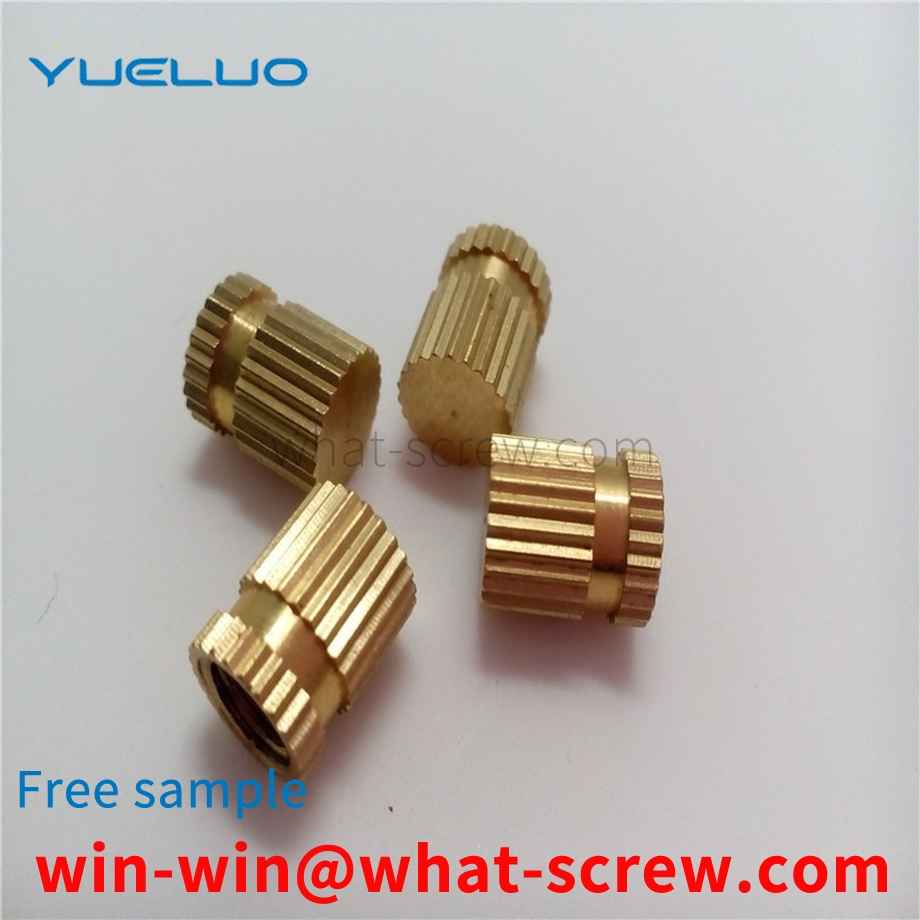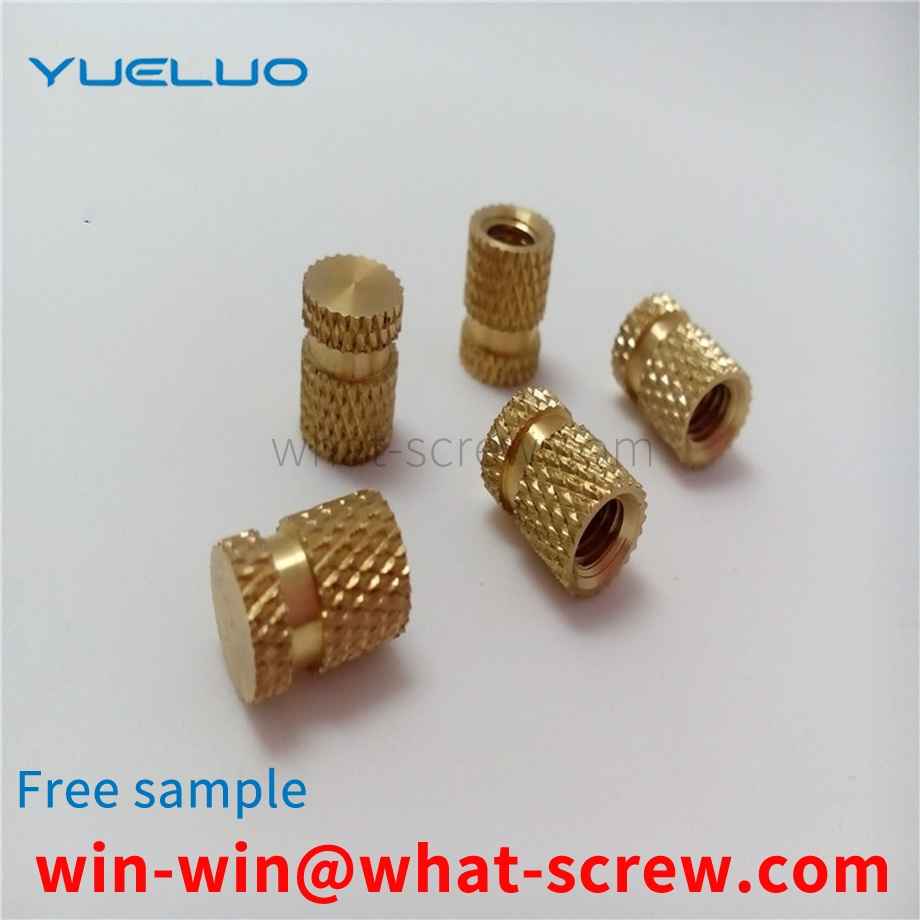2. Low cycle fatigue Low cycle fatigue means that the fatigue stress is close to or exceeds the yield limit of the material. The material has a certain amount of plastic deformation in each strain cycle. The life is generally in the range of 102 to several times 104, and the fatigue curve is generally used. ε-N curve representation. The finite element calculation results show that after the bolt is screwed into the lock nut, the stress at the root of the threaded piece is large, and part of the surface area is in a yield state, while the strain in the central area of the root of the threaded piece is small, and the strain situation is more complicated. The area with high strain at the root of the thread piece experiences reciprocating loading, which is prone to low cycle fatigue, which reduces the pressure of the thread piece and reduces the screw-out torque.
The key connection is a typical mechanical connection, which is usually used to connect the parts on the shaft and to fix them circumferentially and realize torque transmission. Key connection can be divided into flat key connection, semicircular key connection, wedge key connection and tangential key connection, among which flat key connection is widely used in practical engineering because of its simple structure, good alignment and convenient manufacturing. During operation, torque is transmitted through the contact between the sides of the key and the sides of the shaft and hub grooves. In order to ensure the transmission accuracy, the flat key structure generally adopts the transition fit. Due to its structural characteristics and working conditions, it is difficult to use ordinary mechanical tools to lift and pull out during the maintenance process. If forcibly removed, the key and the mating shaft will be destroyed.
High-strength fasteners must be quenched and tempered according to technical requirements. The purpose of heat treatment and tempering is to improve the comprehensive mechanical properties of fasteners to meet the specified tensile strength value and yield ratio of the product. The heat treatment process has a crucial impact on high-strength fasteners, especially its intrinsic quality. Therefore, in order to produce high-quality high-strength fasteners, advanced heat treatment technology and equipment must be available. Due to the large production volume and low price of high-strength bolts, and the threaded part is a relatively fine and relatively precise structure, the heat treatment equipment is required to have large production capacity, high degree of automation, and good heat treatment quality. Since the 1990s, the continuous heat treatment production line with protective atmosphere has dominated, and the shock bottom type and mesh belt furnace are especially suitable for heat treatment and tempering of small and medium-sized fasteners. In addition to the good sealing performance of the furnace, the quenching and tempering line also has advanced computer control of atmosphere, temperature and process parameters, equipment failure alarm and display functions. High-strength fasteners are automatically controlled and operated from feeding-cleaning-heating-quenching-cleaning-tempering-coloring to offline, which effectively ensures the quality of heat treatment. The decarburization of the thread will cause the fastener to trip before the resistance required by the mechanical properties is reached, which will cause the failure of the threaded fastener and shorten the service life. Due to the decarburization of the raw material, if the annealing is improper, the decarburized layer of the raw material will be deepened. In the process of quenching and tempering heat treatment, some oxidizing gas is generally brought in from outside the furnace. The rust of the bar wire or the residue on the surface of the wire rod after cold drawing will also decompose after being heated in the furnace, and some oxidizing gases will be generated by the reaction. For example, the surface rust of steel wire, which is composed of iron carbonate and hydroxide, will be decomposed into CO₂ and H₂O after heating, thus aggravating decarburization. Studies have shown that the degree of decarburization of medium carbon alloy steel is more serious than that of carbon steel, and the fastest decarburization temperature is between 700 and 800 degrees Celsius. Because the attachments on the surface of the steel wire decompose and synthesize carbon dioxide and water very quickly under certain conditions, if the furnace gas of the continuous mesh belt furnace is not properly controlled, it will also cause excessive decarburization of the screw. When the high-strength bolt is formed by cold heading, the raw material and the annealed decarburized layer not only still exist, but also are extruded to the top of the thread. For the surface of the fastener that needs to be quenched, the required hardness cannot be obtained. Its mechanical properties (especially strength and wear resistance) decreased. In addition, the surface of the steel wire is decarburized, and the surface layer and the internal structure have different expansion coefficients, and surface cracks may occur during quenching. For this reason, during quenching and heating, the top of the thread should be protected from decarburization, and the fasteners whose raw materials have been decarburized should be properly carbonized, and the advantages of the protective atmosphere in the mesh belt furnace should be adjusted to the original carbon-coated parts. The carbon content is basically the same, so that the decarburized fasteners are slowly restored to the original carbon content. The carbon potential is preferably set at 0.42% - 0.48%. The carbon coating temperature is the same as the quenching heating, and cannot be carried out at high temperatures , so as to avoid coarse grains and affect mechanical properties. The quality problems that may occur in the process of quenching and tempering of fasteners mainly include: insufficient hardness in the quenched state; uneven hardness in the quenched state; excessive quenching deformation; quenching cracking. Such problems in the field are often related to raw materials, quenching heating and quenching cooling. Correctly formulating the heat treatment process and standardizing the production operation process can often avoid such quality accidents.
1. Fixed anchor bolts, also known as short anchor bolts, are poured together with the foundation and used to fix equipment without strong vibration and impact. 2. The movable anchor bolt, also known as the long anchor bolt, is a detachable anchor bolt used for fixing heavy machinery and equipment with strong vibration and impact. 3. Expansion anchor bolts are often used to fix stationary simple equipment or auxiliary equipment. The installation of expansion anchor bolts should meet the following requirements: the distance from the center of the bolt to the edge of the foundation shall not be less than 7 times the diameter of the expansion anchor bolt; the foundation strength of the expansion anchor bolt shall not be less than 10MPa; there shall be no cracks in the drilling holes. The drill bit collides with the steel bars and buried pipes in the foundation; the diameter and depth of the drill hole should match the expansion anchor bolts. 4. The bonding anchor bolt is a kind of anchor bolt commonly used in recent years, and its method and requirements are the same as the expansion anchor anchor bolt. However, when bonding, pay attention to blowing out the debris in the hole, and do not get wet. [1]
Nuts cooperate with screws to achieve the fixing and connection of components. SMD nuts are generally used in the circuit board industry to fix electronic components. That is, the chip nut is soldered on the circuit board by solder, and the electronic components are fixed by turning the screw. However, when the current chip nut is soldered on the circuit board, there may be uneven soldering, which makes the soldering untidy. At the same time, during soldering, the excess solder overflows from the periphery of the nut, which affects the appearance and may affect its appearance. electrical properties. In addition, the nut is only welded with the circuit board on one end face, and its firmness and reliability after welding are low.
We have many years of experience in the production and sales of screws, nuts, flat washers, etc. The main products are: semi-circle head machine wire pan head screws, non-slip nuts with pads and teeth, wave spring washers, sets of complete nuts and other products, we can provide you with The right fastener solution for you.



















 Service Hotline
Service Hotline




